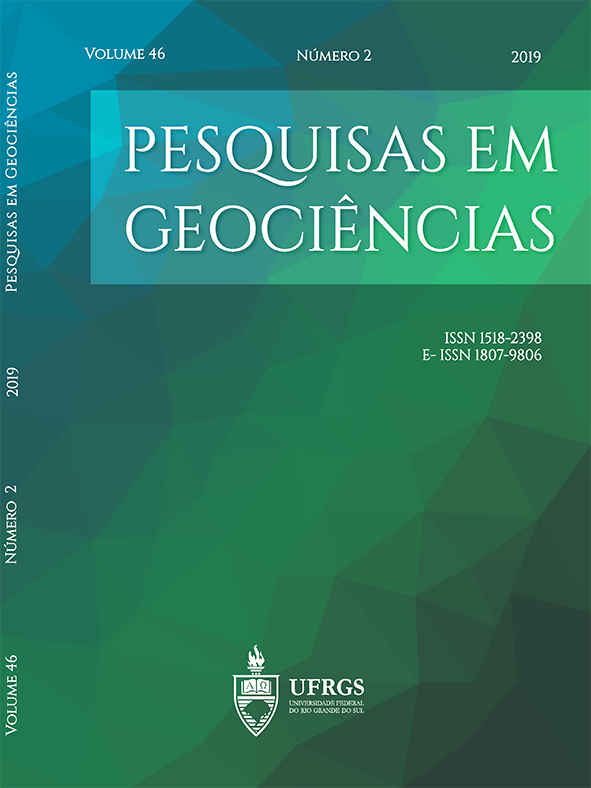Geologia e significado tectônico das rochas metavulcanossedimentares do Complexo Coxilha do Batovi, Cinturão Dom Feliciano (São Gabriel, RS)
DOI:
https://doi.org/10.22456/1807-9806.95465Resumo
O Complexo Coxilha do Batovi (CCB) é uma sequência metavulcanossedimentar de idade pré-cambriana exposto em uma janela estrutural ao sul da cidade de São Gabriel. Para entender a evolução estrutural do complexo foi realizado um estudo integrado de estratigrafia, sedimentologia, análise petrográfica, geologia estrutural e petrologia metamórfica. O CCB está situado no extremo sudoeste do limite do Terreno Taquarembó, sobre a Zona de Cisalhamento Ibaré de direção NW-SE. É composto por meta-arenitos quartzíticos e arcoseanos finos a médios e metapelitos, com mármores, rochas metavulcânicas, formações ferríferas bandadas e metagranitos subordinados. As rochas do CCB registram uma complexa trama estrutural, resultante de uma história de deformação progressiva associada a um metamorfismo orogênico de baixo grau, na fácies Xistos Verdes. A espessura original do pacote sedimentar está multiplicada pela ação de dobras isoclinais e pela transposição da xistosidade principal. Em porções menos deformadas observa-se estratificação plano-paralela, cruzada acanalada e cruzada planar de baixo ângulo. Os perfis colunares levantados sugerem uma sequência de sedimentos progradantes caracterizados por sedimentos siliciclásticos quartzosos e carbonáticos depositados provavelmente em um ambiente deltaico em uma bacia intracratônica ou de margem passiva. A deformação do complexo resulta de um encurtamento regional de direção NE-SW, cuja máxima atuação da deformação gerou a Zona de Cisalhamento Ibaré.Downloads
Não há dados estatísticos.
Downloads
Publicado
2019-08-20
Como Citar
SALVI, M., & PHILIPP, R. P. (2019). Geologia e significado tectônico das rochas metavulcanossedimentares do Complexo Coxilha do Batovi, Cinturão Dom Feliciano (São Gabriel, RS). Pesquisas Em Geociências, 46(2). https://doi.org/10.22456/1807-9806.95465
Edição
Seção
ARTIGOS



